How to Perform Hajj: Complete Hajj Guideline 2026

Hajj is one of the five pillars of Islam. It is a Fard (obligatory) act of worship for able-bodied Muslims who can afford the journey to the sacred city of Makkah. This spiritual pilgrimage brings us closer to Allah, allows us to seek His mercy, renew our Iman, and much more.
The key rituals of Hajj take place every year from the 8th to the 13th of Dhul Hijjah. In 2025, Hajj is expected to begin on 4th June and end on 9th June, Insha’Allah.
If you’re blessed to perform Hajj this year, it’s important to learn how to perform Hajj properly before you go. Knowing the steps will help you carry out each ritual correctly and avoid common mistakes. This blog will highlight the things to do on Hajj step by step.
Types of Hajj
Hajj may have three types- Tamattu, Qiran, and Ifrad. Each of them has its own rituals. Depending upon the type of Hajj, pilgrims should perform the rites.
1. Tamattu Hajj
- Hajj Tamattu involves complete Umrah and Hajj.
- It is performed during the Hajj days of Dhul Hijjah.
- Sacrifice is mandatory.
- After performing tawaf and Sa’i in Umrah, pilgrims get a temporary release from Ihram.
- After the break, the pilgrim re-enters the state of Ihram from the 8th of Dhul Hijjah to perform the Hajj rituals.
2. Qiran Hajj
- Hajj Qiran combines Umrah and Hajj without any break.
- Offering Sacrifice is obligatory.
- Pilgrims enter the state of Ihram and perform both Umrah and Hajj rituals continuously.
- Recommended for those who can sustain the state of Ihram for an extended period.
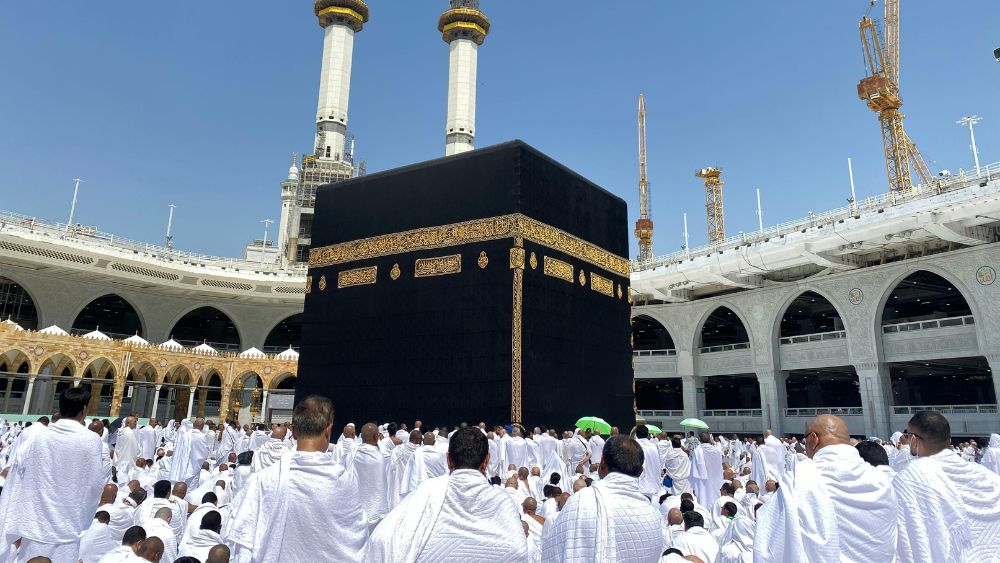
3. Ifrad Hajj
- Hajj Ifrad focuses solely on performing the rituals of Hajj only.
- Performing Umrah isn’t part of this Hajj.
- Doesn’t require animal sacrifice.
Note: Among these three kinds of Hajj, Hajj-E-Tamattu is the best option, as our Prophet Muhammad ﷺ performed this with his companions (RA) in the Farewell Hajj. So, if you intend to perform Hajj, we recommend you make Tamattu Hajj.
Hajj Preparation
Before you depart for Hajj, make sure you do the following things.
- Decide first which type of Hajj you will do.
- Complete your Hajj trip procedure, such as managing a government-certified Hajj agency, plane ticket, hotel where you will live in Saudi Arabia, etc.
- For women, you must bring your Mahram men with you.
- Learning the Hajj rituals and struggles you may face is necessary before you go.
Step-by-Step Guide on How to Do Hajj
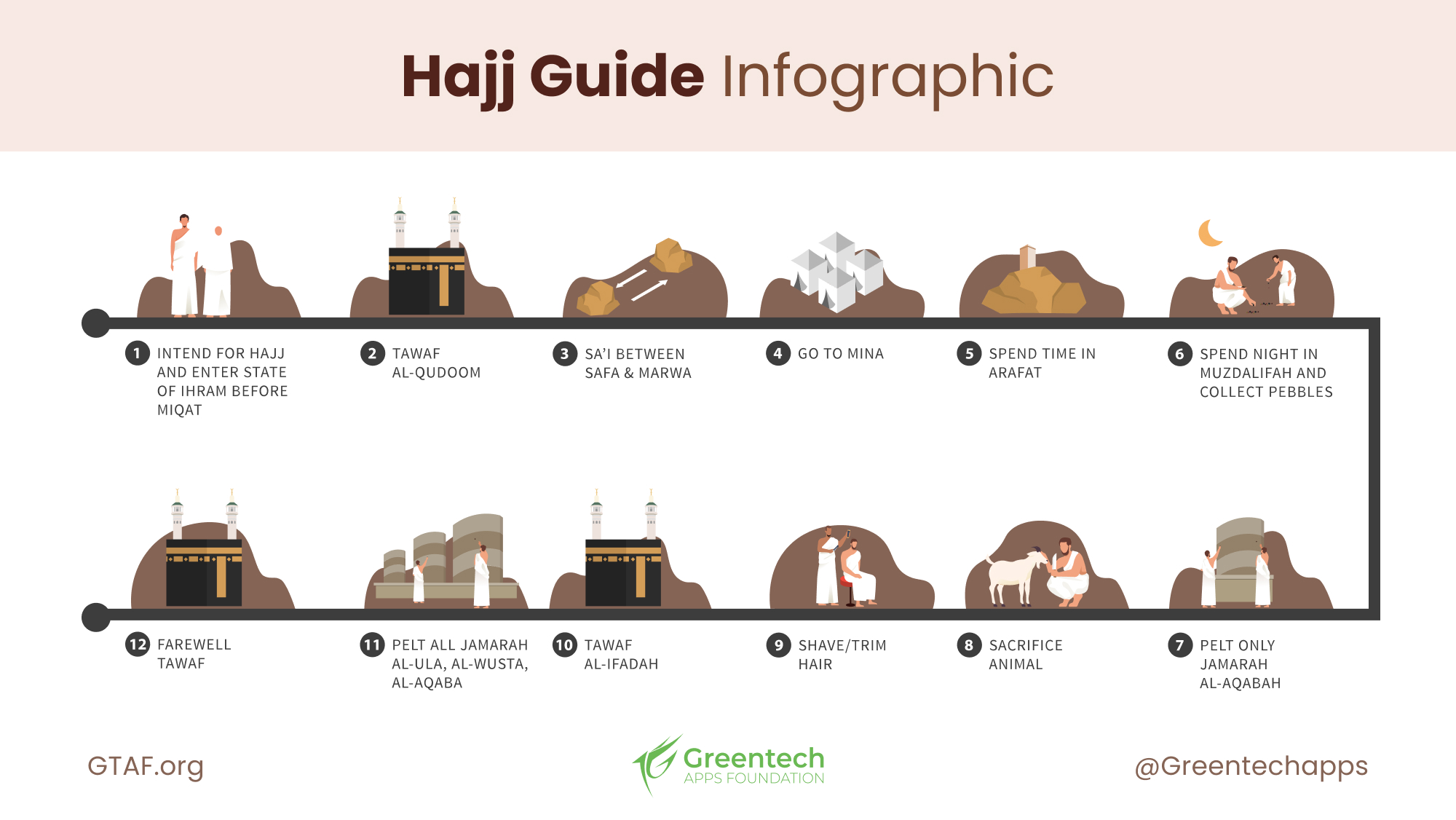
Now we’ll break down the key rituals of Hajj and ways to perform these holy activities in a hierarchical method, including the time of doing these. Now, we’ll explain all the essential steps of Hajj.
Step 1: Niyyah (Intention)
Make your Niyyah before you start your journey for Hajj. It’s important to intend sincerely within your heart. The intention must be performed for the sake of Allah alone, with a desire to get rewarded hereafter, not for worldly things.
Step 2: Enter Ihram
Ihram is a state of purity (both physically and mentally) that pilgrims must enter before reaching the Hajj boundary, aka Miqat. Ihram is basically the intention to do Hajj or Umrah, or both. There are some specific rules and restrictions of Ihram. Before knowing that, let’s learn about Miqat first.
2.1 Miqat or Meeqat
There are five miqat points, and each has its specific boundary known as the miqat line. The meeqat points are as follows-
- Dhu’l-Hulayfah or Abyar ‘Ali: This miqat is located approximately 424 kilometers (263 miles) north of Mecca, and it is the miqat for those coming from the direction of Madinah.
- Al-Juhfah: This meeqat is situated near Rabigh, about 179 kilometers (111 miles) northwest of Makkah. It serves as the miqat for those coming from the direction of Palestine, Syria, Jordan, Sudan, Egypt, Morocco, and other areas in the north.
- Yalamlam or Sa’adiyah: This miqat is situated around 105 kilometers (65 miles) to the southeast of Makkah. It serves as the meeqat for those coming from the direction of Yemen, Pakistan, India, and Bangladesh.
- Qarn al-Manazil or As-Sail Al-Kabeer: This miqat is located approximately 82 kilometers (51 miles) to the northeast of Makkah. It is the miqat for those coming from the direction of Taif, Najd, UAE, Malaysia, Singapore, Australia, etc.
- Dhat ‘Irq: This meeqat is located approximately 110 kilometers (68 miles) northeast of Makkah. It is the miqat for those coming from the direction of Iraq, Iran, and other areas in the east.
When pilgrims reach any of these meeqat points or their respective miqat lines, they must enter the state of ihram. To enter the Ihram state, they must perform the required rituals and wear the prescribed Ihram clothing.
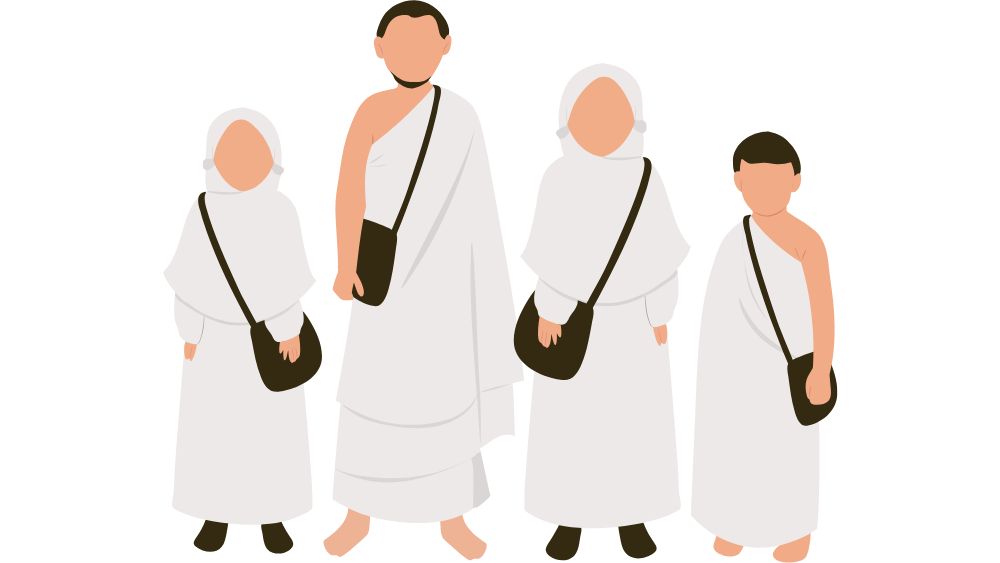
2.2 Clothing of Ihram
- Men entering the state of ihram wear two white, unsewn pieces of cloth. One piece covers the upper body, and the other is wrapped around the waist, covering the lower body. But don’t cover the head.
- Women do not have specific clothing requirements to enter the state of ihram. They should wear modest attire that adheres to Islamic guidelines, like loose clothes. They shouldn’t cover their faces with Niqab unless non-mahram men are seeing them.
- Sandal is allowed for both males and females.
This simple attire removes distinctions of wealth, status, and individuality, fostering a sense of equality among pilgrims.
2.3 Before Entering Ihram, Consider the Following Things
- If needed, you can trim your hair and mustache and clip your nails before entering Ihram condition. You can take a shower too.
- Wear the Ihram clothes.
- If you’ve already entered the miqat point but forgot to enter into the Ihram state, you must exit and re-enter the Makkah or sacrifice a sheep as punishment.
Recite the following dua according to the Hajj you have intended-
| Hajj Type | Dua | Meaning of the Dua |
| Tamattu | Labbayk Allahumma bi ‘Umrah | Here I am, O Allah, for ‘Umrah |
| Qiran | Labbayk Allahumma bi Hajjah wa ‘Umrah | Here I am, O Allah, for Hajj and ‘Umrah |
| Ifrad | Labbayk Allahumma Hajjan | Here I am, O Allah, for Hajj |
After that pilgrims should say, “Allaahumma hadhihi hijjah la riya-a fiha wa la sum’ah”.
Meaning of the dua: O Allah, this is a pilgrimage in which there is no showing off or seeking reputation.
Note: If you’re going for Hajj, install the Sadiq app now to get Hajj and other duas, prayer times, Qibla direction, Quran, nearby Masjid finder, and many more.
2.4 Things to Consider after Entering Ihram
- Men are prohibited from trimming or removing their hair after Ihram. Women, however, may trim a small portion of their hair if required.
- The use of scented products, including perfumes, is prohibited in Ihram.
- Pilgrims are not allowed to hunt or kill any land animals while in ihram.
- Sexual relations is not permitted during the period of Ihram.
- Engaging in disputes, arguments, or any form of violence is discouraged during the state of ihram.
- After entering the Ihram state, you are not allowed to do any sins. Even it is forbidden to hurt others by words.
Allah Subhanhu Wa Ta’Ala says in the Quran,
“So whosoever intends to perform Hajj therein (by assuming Ihram), then he should not have sexual relations, nor commit sin, nor dispute unjustly during the Hajj.” [Sura Al-Baqarah, 2: 197]
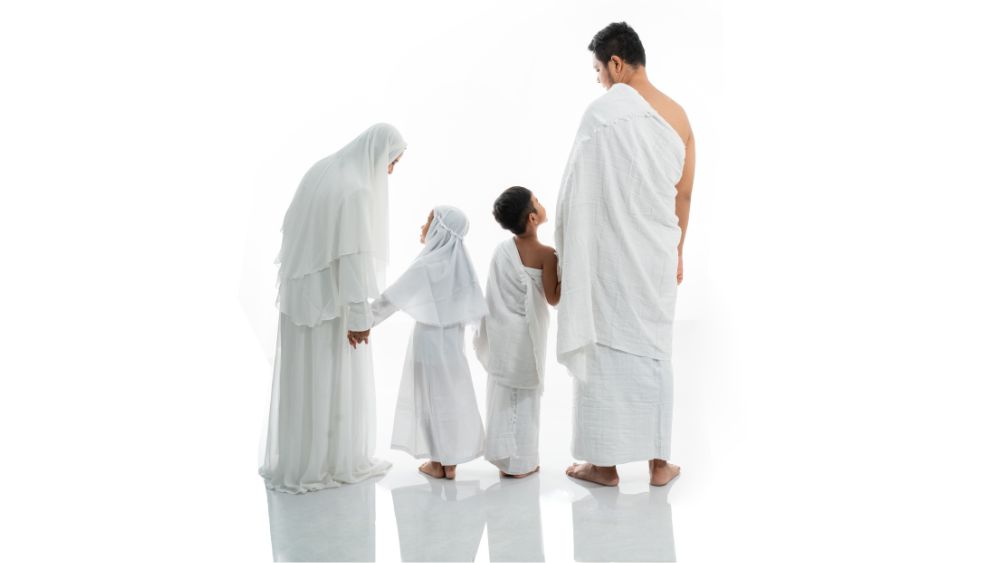
Step 3: Recite Talbiya
Once you are in Ihram, you should recite Talbiya frequently. The Talbiya have come in different words in dissimilar hadith. But the most pronounced Talbiya words are-
لَبَّيْكَ اللَّهُمَّ لَبَّيْكَ، لَبَّيْكَ لَا شَرِيكَ لَكَ لَبَّيْكَ، انَّالْحَمْدَ، وَالنِّعْمَةَ، لَكَ وَالْمُلْكَ، لا شَرِيكَ لَك
Transliteration: Labbayk Allaahumma labbayk, labbayk laa shareeka laka labbayk, ‘innal-hamda, wanni’mata, laka walmulk, laa shareeka laka
Meaning: “Here I am O Allah, here I am. Here I am. You have no partners (other gods). To You alone is all praise and all excellence, and to You is all sovereignty. There is no partner to You.” [Sahih Muslim]
Men should say Talbiya words loudly. And women will recite it softly so non-mahram men can’t hear their voices.
Note: It’s recommended to take a bath before you enter the city of Makkah as our Allah’s Messenger ﷺ did that as narrated in Sahih Muslim.
First Day of Hajj (8th Dhul Hijjah): Tarwiyah Day
Step 4: Perform Tawaf
Tawaf means circling the house of Allah (aka Kaaba) seven times. Begin at the Black Stone to Yamani Corner at anti-clockwise rotation.
- Perform Tawaf 7 times. This Tawaf is called Tawaf Al Qudum.
- Men will perform the first three rounds faster and the remaining four rounds slower. But women will complete all Tawaf with a usual walk.
- While doing Tawaf, touch and kiss the sacred Black stone as a sunnah practice.
- After that, pray in Maqam E Ibrahim.
- Also, drink water from the Zamzam.
Note: Menstruating women should avoid Tawaf.
Step 5: Perform Sa’i
Sa’i refers to walking between the hills of Safa and Marwa seven times. This is a historical Hajj ritual that came from the sacrifice of the Hajar (AS), the wife of Prophet Ibrahim (AS). She ran between these two hills in search of water for the infant son Ismail (AS); in the meanwhile, the Zamzam well was created due to Allah’s will.
After the end of Sa’i, the Umrah, which is also the first part of the Hajj Tamattu rituals, is completed. Now you are out of Ihram temporarily. So, you can wear normal clothes and trim or shave your head.
Note: If you are doing Ifrad Hajj, your Hajj rituals will start now. And those who are doing Qiran Hajj should have in Ihram state till the Hajj end without any break.
Step 6: Head to Mina
- On the first day of Hajj, offer Fajr prayer in Makkah and then proceed to Mina city, which is almost 8 kilometers away from Makkah.
- Before starting your journey to Mina, re-enter Ihram state.
- During travelling to Mina, pilgrims should say Talbiya words frequently, as mentioned above.
- In Mina, pilgrims will offer the following five obligatory prayers- Dhuhr, Asr, Magrib, Isa, and Fajr.
- Pilgrims will stay overnight on the first day of Hajj in Mina.
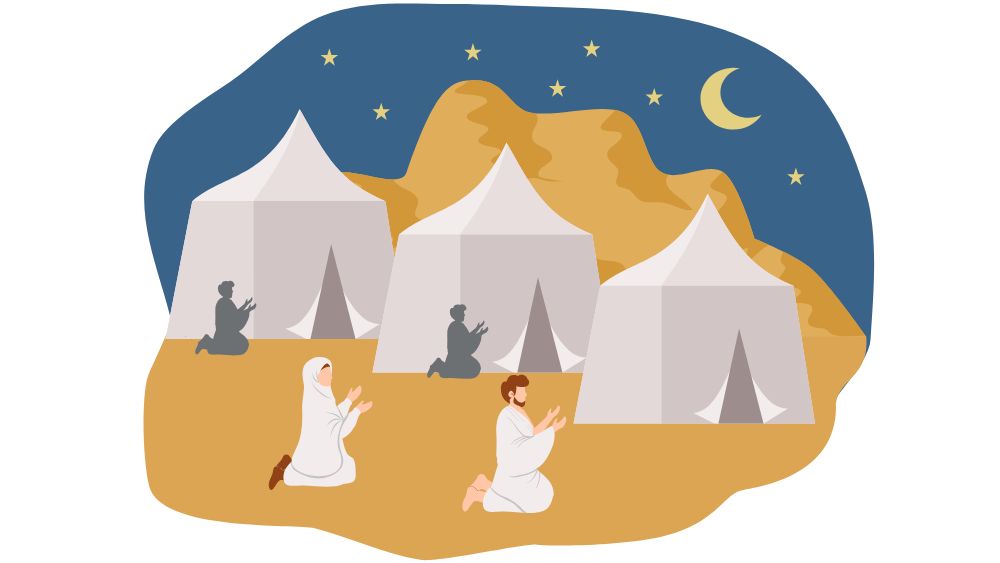
Second Day of Hajj (9th Dhul Hijjah): Arafah Day
Step 7: Arrive at Arafah
- On the second day of Hajj, pilgrims will pray the Fajr prayer in Mina and then leave there for Arafah after sunrise.
- When travelling from Mina to Arafah, recite Talbiya and Takbeer (Allahu Akbar) as much as possible.
- You must arrive at the plains of Arafah before the starting time (Zawaal) of the Dhuhr prayer.
- The Imam will give Khutbah in Masjid-E-Namirah.
- After that, pilgrims will offer Dhuhr and Asr prayers combinedly as a Sunnah practice.
- Then stay on the plain of Arafah until sunset by remembering Allah, special supplication for forgiveness, and other good deeds.
- Don’t pray the Maghrib prayer in Arafah. After sunset, move for Muzdalifah.
Arafah is a Mount that is situated almost 20 kilometers east of Makkah. And the distance between Mina and Arafah is around 15 kilometres.
The day of Arafah is a special day for Muslim Ummah. On Arafah Day, Allah (SWT) forgives the sins and frees lots of people from the Hellfire. Prophet Muhammad ﷺ gave a final sermon in Farewell Hajj on the day of Arafah. If you are not doing Hajj, it’s Sunnah to fast on this day.
Ummul Mu’minin Aisha (RA) narrated a hadith from Allah’s Messenger ﷺ: “There is no day on which Allah frees more people from the Hellfire than the Day of ‘Arafah.” [Sahih Muslim]
Note: Whether you’re doing Hajj or not, there is a special good deed to do for everyone. Say Takbeer after each obligatory prayer. It starts on the 9th of Dhul Fajr and ends on the 13th of Dhul Hijjah Asar.
The words of Takbeer are- Allahu Akbar, Allahu Akbar, La ilaha illallah, Allahu Akbar, Allahu Akbar, wa lillahil Hamd (Allah is the Greatest, Allah is the Greatest, there is no God except Allah, Allah is the Greatest, Allah is the Greatest, and all praise belongs to Allah).
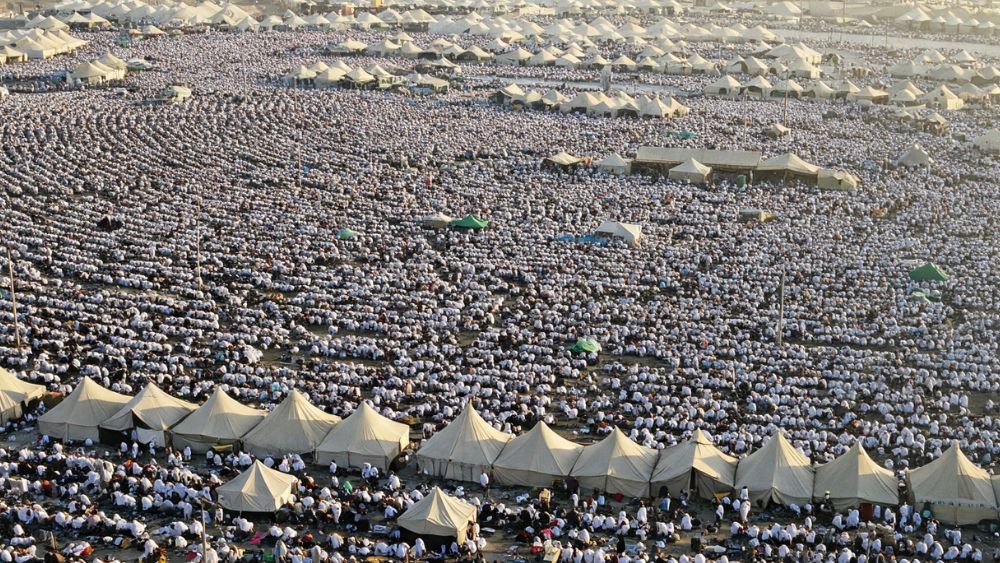
Step 8: Proceed to Muzdalifah
- When travelling to Muzdalifah, recite Talbiya and Takbeer frequently.
- After reaching Muzdalifah, pray Maghrib and Isha prayer combinedly on Isha times as a Sunnah practice.
- Pilgrims will stay overnight on the second day of Hajj in Muzdalifah until the next day’s sunrise.
- Pray and offer special supplication to Allah (SWT) as much as you can at night.
- Before leaving Muzdalifah, take 7, 49, or 70 (usually 7) pebbles for the 3rd day of Hajj activities for Jamaarat.
You can supplicate the following duas during staying there-
أَكْبَرُ (Allaahu ‘Akbar)
لاَإِلَهَ إِلاَّ اللهُ (Laa ‘ilaaha ‘illallaah)
أَللّهُ أَحَدٌ (Allaahu ‘Ahad )
Abdullah ibn Umar (RA) narrates a hadith,
“The Prophet ﷺ offered the Maghrib and ‘Isha prayers together at Muzdalifah with a separate Iqamah (second call to prayer) for each of them and did not offer any optional prayer in between them or after each of them.” [Sahih Bukhari]
Third Day of Hajj (10th Dhul Hijjah): First Day of Eid
Step 9: Stoning to Jamarah Al-Aqabah
- After offering Fajr prayer the next morning, depart Muzdalifah for Mina.
- When coming to Mina from Muzdalifah, pilgrims should recite Talbiya.
- After reaching Mina, pilgrims will do Ramy by throwing seven pebbles they collected before at the Jamarah Al-Aqabah (biggest stone walls).
- Before starting Ramy, stop saying Talbiya.
- During throwing each pebble, say Allahu Akbar (Allah is the greatest).
This practice of pebble-throwing at the devil originated from Prophet Ibrahim (AS). Shaytan tried to hinder the sacrifice attempt of Prophet Ibrahim (AS) thus he threw stones at the cursed Shaytan.
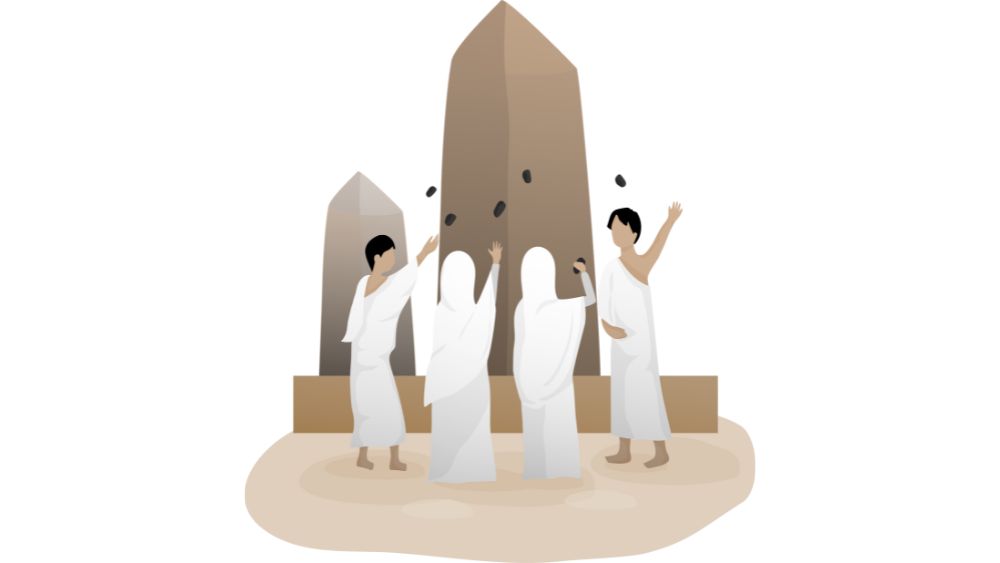
Step 10: Nahr (Sacrifice)
Now, pilgrims will proceed to sacrifice Udhiya (Qurbani) animals. You can slaughter personally or appoint someone on behalf of you to sacrifice.
Recite the dua mentioned below during Sacrifice-
بِسْمِ اللهِ واللهُ أَكْبَرُ اللَّهُمَّ مِنْكَ ولَكَ اللَّهُمَّ تَقَبَّلْ مِنِّي
Transliteration: Bismillaahi wallaahu ‘Akbar [Allaahumma minka wa laka] Allaahumma taqabbal minnee
Note: Sacrificing the animal isn’t part of Ifraad Hajj.
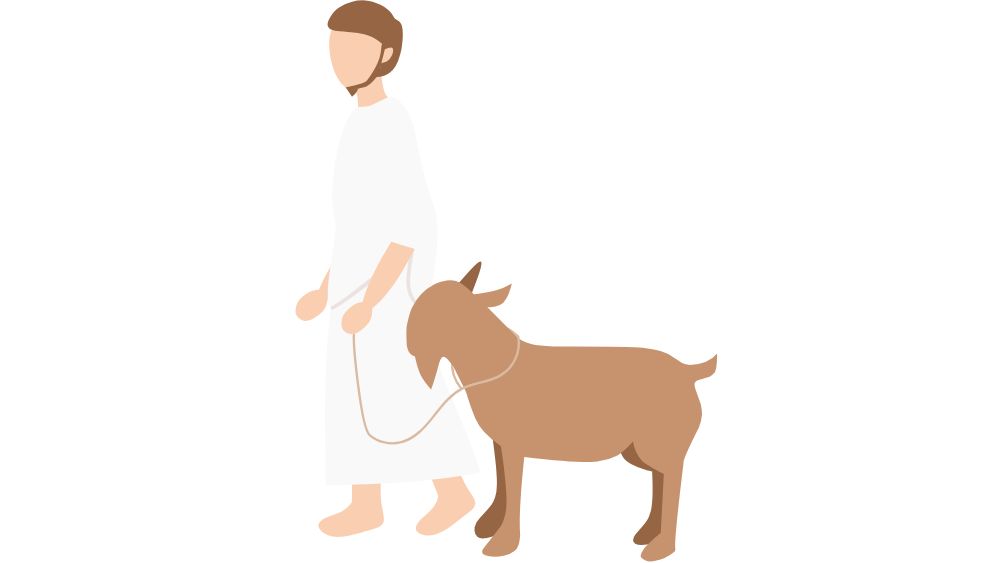
Step 11: Halq or Taqsir
- After sacrifice, you have to shave your head fully or trim the hair partially.
- Now you are temporarily out of Ihram state.
- So, you can wear the usual dresses but can’t go for intimacy with spouses.
Step 12: Go for Sa’i and Perform Tawaf
- Now go to Masjid al-Haram (Kaaba) to make Tawaf al-Ifarad as before.
- Then perform two Raka’h prayers in Makam E Ibrahim.
- Also, pray the Dhuhr Salah in Kaaba as Allah’s Messenger ﷺ did it.
- Then perform Sa’i to Safa and Marwa.
- Now drink Zamzam water.
- After that, return to Mina and spend the night there.
Fourth Day of Hajj (11th Dhul Hijjah): Second Day of Eid
Step 13: Ramy Al Jamarat
- Offer Dhuhr salah in Mina, then proceed on three Jamarah.
- You have to throw 21 pebbles on three Jamarat.
- First, throw seven pebbles on Jamarat-ul-Oola (small Jamarah). During throwing all the pebbles, say Allahu Akbar.
- Then do the same for Jamarat-ul-Wusta (middle Jamarah).
- Finally, throw pebbles in the Jamarah Al-Aqabah (biggest Jamarah).
- After completing Ramy (throwing pebbles), stay the night in Mina.
Fifth Day of Hajj (12th Dhul Hijjah): Third Day of Eid
Step 14: Stoning to Shaytan Then Go to Makkah for Final Tawaf
- Like the second day of Eid, perform the Dhuhr prayer in Mina then throw (Ramy) pebbles to Shaytan.
- After performing Ramy, depart Mina for Makkah before the sunset of 12th Dhul Hijjah. If you still stay in Mina, you must remain there until the following day.
- If you go to Makkah, perform Tawaf-E-Wida (final Tawaf), but entering Ihram isn’t necessary.
- No need to perform Sa’i.
- After that, offer two Raka’h prayers in Maqam E Ibrahim.
Ibn Abbas (RA) narrated a Hadith,
“The people were ordered to perform the Tawaf al-Wida as the last thing before leaving (Makkah), except the menstruating women who were excused.“ [Sahih Bukhari]
Through this, the essential Hajj rituals are completed.
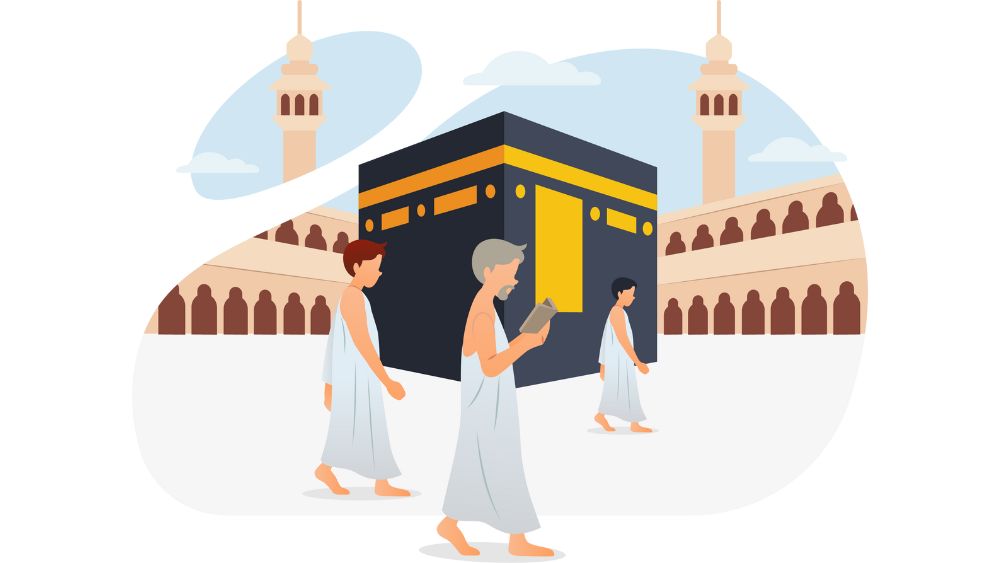
Sixth Day of Hajj (13th Dhul Hijjah): Only for Those Who are Still in Mina
Step 15: Ramy Al Jamarat and Tawaf E Wada
- If you are still in Mina on the 13th of Dhul Hijjah you have to throw stones at Shaytan again.
- Then leave for Makkah and perform Tawaf-E-Wada in Kaaba.
- Also, perform two Rakah prayers in Maqam E Ibrahim.
- No Sa’i is required today.
Congratulations on completing all the Hajj rituals. Now you can leave Makkah. But don’t forget to maintain the Hajj ends spirituality.
Common Mistakes Pilgrims Do During Hajj
Now we’ll highlight some mistakes that some pilgrims make while performing Hajj. You should be aware of these.
- Making dua by shouting in unison
- Designated specific dua for different rounds during Tawaf.
- Thinking of Jamarat as Shaytan.
- Cutting hair after Sa’i.
- Leaving Arafah before sunset.
- Doing multiple Umrah.
- Selfies/Velfies
- Visiting Madina as part of Hajj.
- Becoming excessively attached to material possessions or indulging in unnecessary expenses.
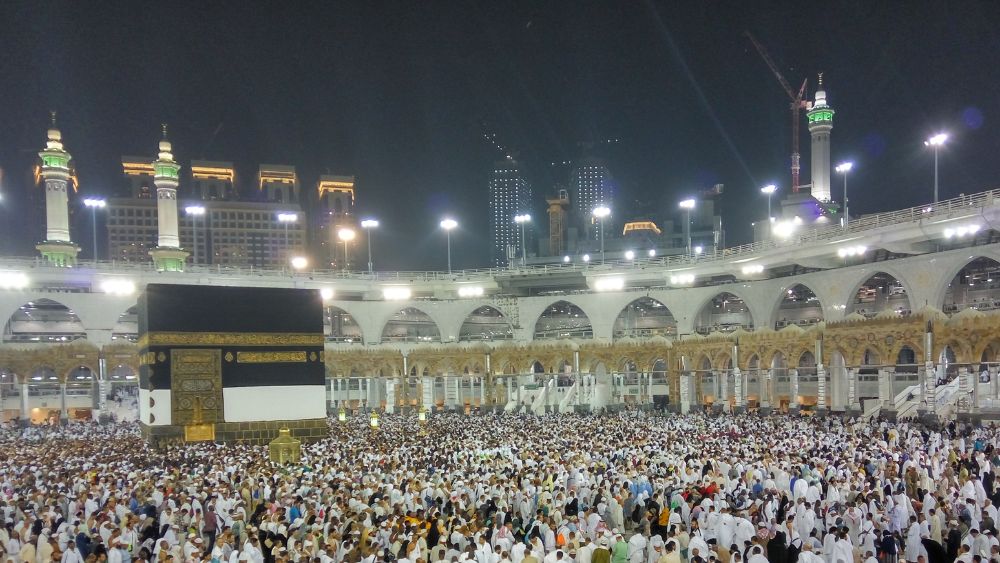
Frequently Asked Questions
Q: Is it okay to ask to make Dua for someone going to Hajj?
A. There is no problem with it. The daughter of Abu Darda (R) asked her husband Safwan bin Abdullah (R):
فَقَالَتْ لَهُ تُرِيدُ الْحَجَّ الْعَامَ قَالَ نَعَمْ . قَالَتْ فَادْعُ اللَّهَ لَنَا بِخَيْرٍ
Meaning: “Do you intend to perform Hajj this year?” He said: “Yes.” She said: “Pray to Allah for us to grant us goodness” [Sunan Ibn Majah: 2895]
Thus it is clear from the Sunnah that asking someone to go to Hajj to make Dua is a Sunnah of the Sahaba (R). Thus, if you know someone is going to Hajj, ask them to make Dua for you.
Q. Why do Muslims go around the Kaaba 7 times?
A. This is the Sunnah practice prescribed by our beloved prophet Muhammad ﷺ.
Q. What are Fraidh and Wajibaat of Hajj?
A. There are 3 Fraidh or essential parts of Hajj such as-
- Entering Ihram state,
- Staying in Arafah (Wuquf at Arafah),
- Tawaf al-Ifadah
And the Wajibaat or obligatory parts of Hajj are nine things according to the Hanafi school of thought. They are-
- Entering Ihram before crossing Miqat
- Sa’i (Proceeding between Safa and Marwah hills)
- Staying Arafaf till sunset
- Staying Muzdalifah at night
- Staying Mina at least two nights
- Stoning (Ramy) of Jamarah
- Sacrificing Animals (for Hajj Tamattu & Hajj Qiran)
- Shaving the head or trimming the hair
- Tawaf-E-Wida (Farewell Tawaf)
Q. What are the conditions that make Hajj Obligatory for Muslims?
A. The conditions of performing Hajj include-
- Pilgrims must be Muslim, adults, sound mind, and free (not slaves)
- Physically fit as well as financially solvent
Q. What are the etiquette of Hajj?
A. Some of the important etiquettes of Hajj are-
- You must perform Hajj from the Halal income.
- Don’t do any sin or harm others after entering Ihram.
- Your purpose for Hajj should be to seek Allah’s forgiveness. Don’t intend any worldly things.
- Spend your journey worshipping Allah and try to get closer to Him.
Q. What is transfer hajj?
A. When a Muslim appoints another Muslim to perform Hajj instead of doing Hajj himself/herself due to his illness or other issues. The designated person should be reliable and fit, so he/she can perform the Hajj activities rightly. The rule of transfer hajj may differ from country to country.
Q. Is visiting Madinah a prerequisite for Hajj?
A. No, it’s not a part of the Hajj rite. But most pilgrims visit Madina to pray in the Masjid an-Nabawi, say Salam to the Messenger of Allah ﷺ, see other Islamic places, etc.
Conclusion
Hajj is a virtuous deed in the Islamic calendar. Those who have the ability to make Hajj shouldn’t delay it. It offers the best opportunity to connect with Allah Subhanahu Wa-Ta’Ala and get His forgiveness.
After reading this article, we hope you’ve got a clear idea of the rituals and steps of Hajj. So, share this with others so they can also benefit from it. May Allah SWT accept all of us to perform Hajj Mabroor.
References:
1. Muslimhands
2. IslamQA


